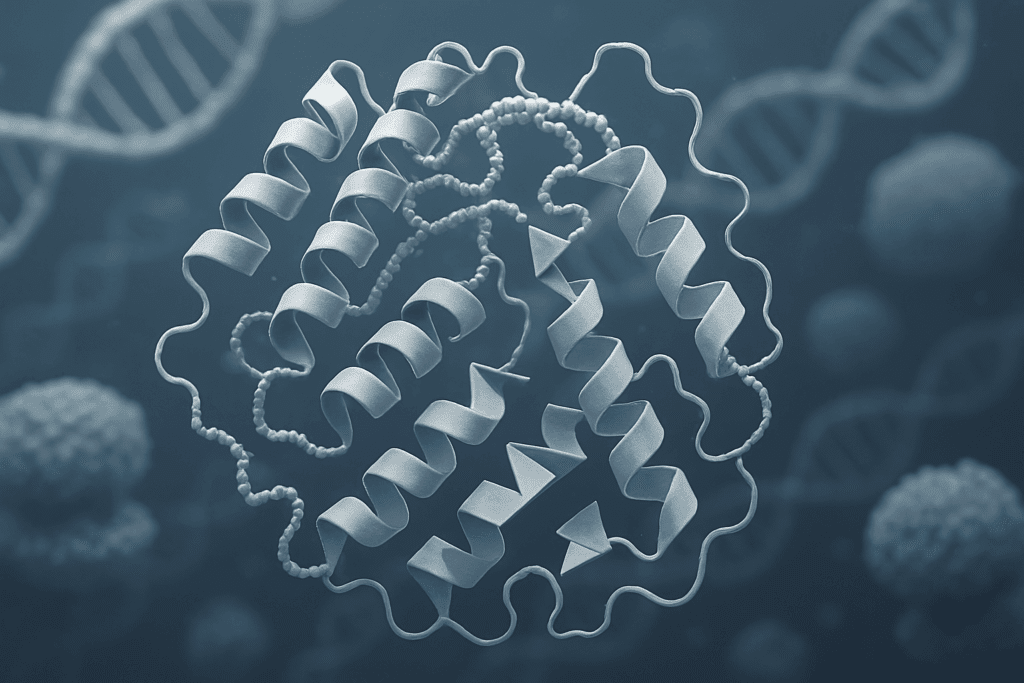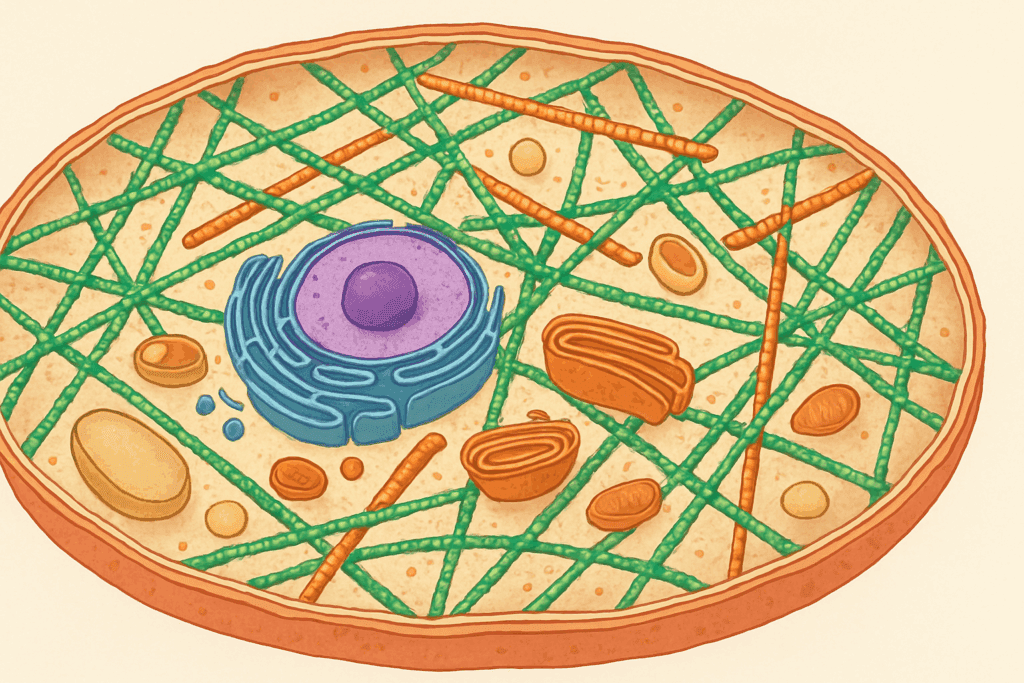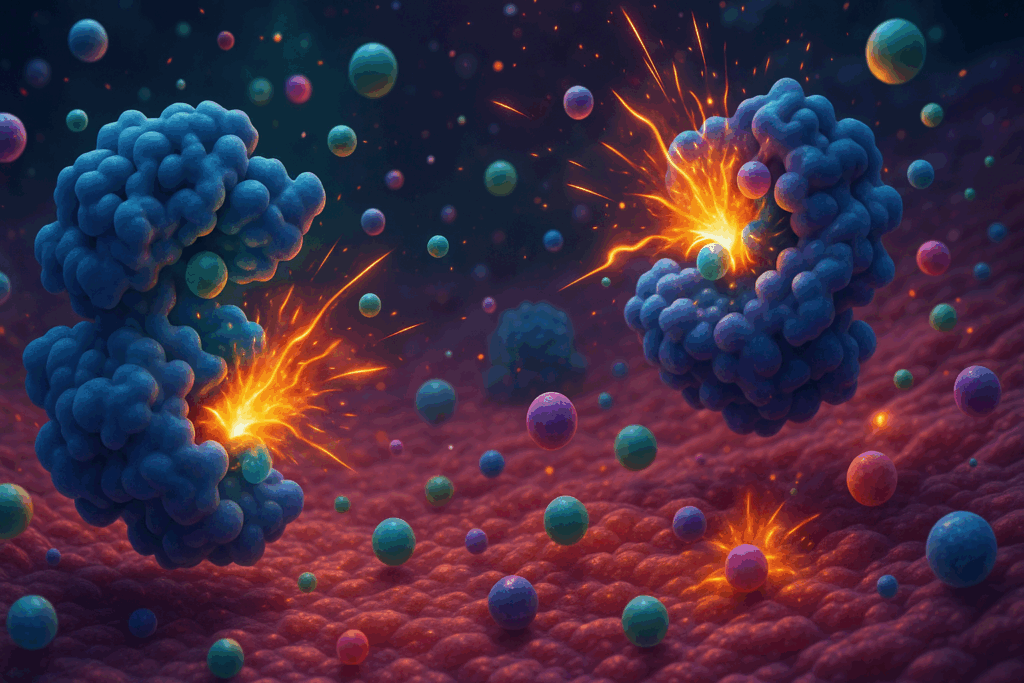Introduction: Why Proteins Are Essential to Cellular Health
Proteins are among the most essential biological macromolecules in all forms of life. From single-celled organisms to the vast complexity of the human body, proteins play a fundamental role in nearly every cellular function. To understand what proteins provide for the cell is to appreciate the very machinery that makes life possible. Their contribution extends far beyond mere structure; protein molecules are intricately involved in biochemical reactions, cellular communication, shape determination, transport, repair, and even defense. Exploring the diverse proteins in cells reveals their central place in biology and opens the door to understanding how their function is deeply tied to cellular health and systemic wellness.
You may also like: Macronutrients vs Micronutrients: What the Simple Definition of Macronutrients Reveals About Your Diet and Health

Defining Proteins in Cells and Their Molecular Structure
To define protein in biology is to describe them as large, complex molecules composed of amino acids, which are linked together by peptide bonds in a specific sequence dictated by DNA. These amino acids fold into unique three-dimensional structures that determine their specific functions. The cellular structure of proteins is essential to their functionality, as a protein’s shape defines its interaction with other molecules. Each protein performs a highly specialized task, and their diversity is vast—enzymes that catalyze reactions, antibodies that defend against pathogens, transporters that move molecules across membranes, and structural proteins that maintain cellular integrity.
Proteins as the Worker Molecules of the Cell
The concept of proteins biology revolves around their identity as the worker molecules of the cell. They are not merely components of the cellular framework; they actively perform the tasks that keep the cell alive. For instance, the process of cellular respiration—a fundamental activity that provides energy in the form of ATP—relies on protein complexes embedded in the mitochondrial membrane. In this way, protein function is inextricably tied to energy production and metabolic health. These proteins are composed of different combinations of the 20 standard amino acids, giving rise to a near-infinite variety of potential protein molecules.

Structural Support and Cellular Architecture
When discussing what proteins provide for the cell, it is crucial to highlight their structural role. Proteins that provide structure include collagen, actin, and tubulin. These protein molecules form the cytoskeleton, giving cells their shape and mechanical strength. Without these proteins, the cellular architecture would collapse. They also play a role in determining how cells interact with their environment and each other, affecting processes like tissue formation, wound healing, and even cancer metastasis. Indeed, what proteins help determine cell shapes are often the same proteins that facilitate cellular movement and communication.

Catalysts and Chemical Reactions in the Cell
Equally significant is how proteins in cells regulate biological reactions. One of the key answers to the question, “Do proteins involve reactions?” is yes—most enzymes are proteins, and enzymes catalyze nearly all chemical reactions within cells. Whether it’s breaking down nutrients for energy, synthesizing new molecules, or repairing DNA, proteins are responsible for accelerating and controlling these biochemical processes. This catalytic activity underlines why proteins are often referred to as biological catalysts. Without proteins, the chemical reactions that sustain life would occur too slowly to be compatible with life.

Protein Synthesis: How Proteins Are Created in Cells
The process of how a protein is created is both intricate and tightly regulated. It begins with gene transcription, during which DNA is transcribed into messenger RNA (mRNA). This mRNA is then translated into a chain of amino acids by ribosomes, which are themselves composed largely of proteins and ribosomal RNA. This chain undergoes folding and sometimes post-translational modifications to become a functional protein. What makes proteins in a cell so versatile is this ability to fold into diverse structures, each tailored to a specific task. Thus, the question of what are the molecules that make up protein is directly answered by recognizing amino acids as the fundamental building blocks.
The Universal Presence of Proteins Across Life Forms
Understanding protein definition biology helps clarify the broader picture of cellular life. Proteins are involved in every facet of a cell’s operation. Some act as signal receptors on the cell surface, detecting external stimuli and initiating a cellular response. Others are involved in transporting ions, hormones, and other molecules in and out of cells. Some proteins even regulate the expression of other genes, playing a role in development and adaptation. These multifaceted roles highlight that proteins are made of more than just amino acids—they are made of purpose and design, driven by evolutionary necessity.
Examples of Proteins in Biological Systems
When we examine what organisms create proteins, the answer includes every known life form, from archaea and bacteria to fungi, plants, and animals. Protein synthesis is a universal process encoded in the genetic material of all organisms. Despite this universality, the types and abundance of proteins vary dramatically between species and cell types. For instance, hemoglobin is an eg of protein specific to red blood cells, where it binds and transports oxygen. Insulin is another protein example in biology, acting as a hormone that regulates blood glucose. These are just a few molecule examples of proteins that play crucial roles in maintaining physiological balance.

Proteins in Immune Function and Repair Mechanisms
An exploration into what proteins provide for the cell would be incomplete without acknowledging their role in immune defense and cellular repair. Antibodies are proteins that recognize and bind to foreign antigens, neutralizing potential threats. Heat shock proteins assist in refolding misfolded proteins and preventing cellular damage under stress. These examples underscore how proteins contribute to both the immediate and long-term survival of the cell. In this context, understanding protein function becomes vital not only to cell biology but also to clinical medicine, as malfunctions in protein activity are often at the root of diseases.
Protein Communication and Regulatory Functions
To further clarify the protein meaning within a cellular framework, one must consider the dynamic interplay between different protein types. While some proteins act as scaffolds, others act as switches, turning cellular pathways on or off. The way proteins interact with each other and with other biomolecules such as lipids, nucleic acids, and carbohydrates reveals a complex network of cellular communication. This network is orchestrated through structural compatibility, allowing precise interactions that underpin cellular coordination and systemic health.
Proteins as the Foundation of Tissue Structure
Students and researchers often ask: Is protein the primary structure in tissues? The answer lies in the context. While cells and extracellular matrices are composed of various molecules, proteins are indeed the dominant structural and functional molecules in most tissues. For instance, in muscle tissue, the proteins actin and myosin are directly responsible for contraction. In connective tissue, collagen provides tensile strength. These structural roles demonstrate how proteins that provide structure are central to the integrity and function of multicellular organisms.

Understanding Protein Shape and Localization
A related and equally vital question is: What does protein in cell look like? The answer varies depending on the protein, but advanced microscopy and molecular modeling have revealed intricate globular, fibrous, or membrane-bound forms. The cellular structure of proteins determines their location, function, and interaction with other molecules. This structural variability is what enables such diversity in protein function. It also explains how mutations in a single amino acid can drastically alter protein activity, sometimes leading to disease.
Profiling Proteins and Predicting Their Function
In understanding what are the statements of proteins, scientists often refer to their roles, structures, and sequences. These “statements” or profiles are used to classify proteins and predict their functions. Bioinformatics tools now allow researchers to analyze the amino acid sequences of proteins and match them with known functions, aiding in the discovery of new protein roles. This growing field of computational biology has revolutionized how we define protein in biology, extending our understanding into uncharted molecular territories.
The Nutritional Relevance of Proteins
The connection between nutrition and protein biology is equally profound. Proteins must be obtained from the diet to supply the body with essential amino acids—those that cannot be synthesized internally. Once ingested, dietary proteins are broken down into their constituent amino acids and used to build new proteins required by the body. This nutritional dimension is crucial for maintaining cellular functions, growth, and repair. Thus, the quality and digestibility of dietary proteins have direct implications for health.
Amino Acids and the Composition of Proteins
In exploring the idea of proteins are composed of amino acids, it’s helpful to recognize that their properties—such as charge, polarity, and hydrophobicity—determine how they fold and function. These characteristics influence the final structure and behavior of the protein, impacting everything from enzyme activity to cellular signaling. This connection between composition and function reinforces the importance of understanding the protein def in biology.
Protein Synthesis and Its Clinical Applications
In biotechnology, how a protein is created in vitro can be tightly controlled to produce specific outcomes. Techniques such as recombinant DNA technology allow for the insertion of genes coding for a protein into bacterial or mammalian cells, which then express the protein in large quantities. These engineered proteins are used in vaccines, insulin production, and industrial enzymes, reflecting the power of harnessing protein biology for human advancement.
Proteins as Coordinators of the Cellular Symphony
One of the enduring marvels of cellular biology is the way proteins orchestrate almost every aspect of life. They function as enzymes, messengers, structural elements, and regulators. They interpret genetic instructions and execute them with astonishing precision. The more we understand about what makes proteins in a cell, the more we uncover about the mechanisms of health and disease. Proteins are the storytellers of cellular life, narrating the processes that sustain every heartbeat, thought, and breath.
Frequently Asked Questions (FAQ) About Proteins in Cells and Their Functions
1. How do proteins in cells adapt to changes in the environment?
Proteins in cells possess remarkable flexibility, enabling them to adapt dynamically to external and internal stimuli. For instance, proteins can undergo conformational changes, allowing their structure and activity to be modulated based on environmental factors like temperature, pH, or stress signals. This plasticity supports diverse proteins cellular functions, including signal transduction and metabolic regulation. The cellular structure of proteins often includes regulatory domains that serve as molecular switches, altering the protein function in response to cellular demands. As a result, protein molecules continuously evolve their roles in real time, helping cells survive fluctuating conditions such as oxidative stress or nutrient scarcity.
2. Can diet and lifestyle influence what proteins provide for the cell?
Absolutely. While genetic coding determines how a protein is created, nutrient availability and lifestyle directly affect protein expression and folding. A diet rich in high-quality amino acids ensures that proteins are made of optimal molecular building blocks. Additionally, exercise, sleep, and stress levels influence protein synthesis pathways through hormonal regulation. Understanding how diet affects the cellular structure of proteins brings a practical dimension to the study of protein function. For example, insufficient intake of essential amino acids can impair what proteins help determine cell shapes and compromise tissue integrity.
3. How are protein molecules involved in neurobiology and brain function?
Proteins in cells of the nervous system are especially complex, playing key roles in neurotransmitter release, receptor sensitivity, and synaptic plasticity. In brain tissue, proteins such as ion channel subunits and synaptic scaffolding molecules help regulate information flow. The study of proteins biology in neurons reveals how structural and enzymatic proteins synchronize brain activity. Furthermore, protein molecules like BDNF (Brain-Derived Neurotrophic Factor) support neuron growth and repair. Disruption of these proteins can lead to neurological conditions, making it essential to understand what do proteins provide for the cell in the context of brain health.
4. What are the long-term effects of protein misfolding or malfunction?
Misfolded proteins are often toxic to cells and are implicated in a range of chronic diseases. In conditions like Alzheimer’s, Parkinson’s, and Huntington’s, the accumulation of defective protein molecules leads to cellular dysfunction and death. Since proteins are composed of amino acids arranged in specific sequences, any disruption in that order can compromise the entire protein function. Proteins that provide structure to neurons may collapse or aggregate when misfolded. Thus, identifying what are the molecules that make up protein becomes crucial in understanding and preventing proteinopathies.
5. How do scientists define protein function beyond structural or enzymatic roles?
Today, protein function extends into more abstract and dynamic realms, including epigenetic regulation, RNA processing, and chromatin remodeling. Proteins such as histone modifiers affect gene accessibility, determining which parts of the genome are active. This expanded view of protein definition biology reflects a deeper understanding of proteins cellular functions. In this broader sense, proteins can be viewed as regulatory agents that not only carry out instructions but also influence which instructions are followed. This highlights why scientists continue to refine how they define protein in biology to include complex and context-specific roles.
6. What are statements of proteins in proteomics, and how are they used in medicine?
In proteomics, statements of proteins refer to descriptive profiles that include the identity, structure, modifications, and interactions of a given protein. These statements serve as molecular fingerprints that help researchers determine disease states, monitor drug responses, and develop personalized therapies. They expand on traditional protein def biology by considering post-translational modifications, isoform variations, and binding partners. Understanding what are statements of proteins enables a more holistic view of protein behavior in both health and disease. This multidimensional analysis is becoming essential in developing targeted, protein-based treatments.
7. What role do proteins play in shaping tissue regeneration and wound healing?
Protein molecules are fundamental to the body’s ability to heal and regenerate tissues. Proteins that provide structure, such as fibronectin and laminin, help create scaffolding in the extracellular matrix during tissue repair. Additionally, growth factor proteins signal stem cells to proliferate and differentiate. The coordinated activity of these proteins in cells allows for complex regeneration pathways. By studying what proteins help determine cell shapes and guide cellular movement, scientists are creating biomimetic materials to improve healing outcomes in regenerative medicine.
8. Are amino acids proteins, or do they serve another role?
While amino acids are not proteins themselves, they are the essential units from which all proteins are made. When discussing the question, “Are amino acids proteins?” it’s important to understand that amino acids must be linked in specific sequences to create functional protein molecules. These sequences determine folding, interaction sites, and the resulting biological activity. Thus, while amino acids are fundamental, they require proper assembly to define protein function. Investigating how different combinations influence protein meaning is a key focus in synthetic biology and drug development.
9. How do proteins influence how cells communicate with each other?
Proteins in cells facilitate communication through various mechanisms, including receptor-ligand interactions, mechanical signaling, and second-messenger cascades. Membrane proteins serve as docking stations for hormones and neurotransmitters, translating extracellular signals into intracellular responses. This process exemplifies the role of proteins as worker molecules of the cell. Moreover, proteins composed of signaling motifs coordinate the timing and localization of these responses. Exploring protein examples biology such as integrins or G-protein-coupled receptors sheds light on how communication networks are maintained across tissues.
10. What innovations are shaping the future of protein research?
Recent advances in protein biology include the rise of AI-driven protein structure prediction tools like AlphaFold, which dramatically accelerate the ability to visualize what does protein in cell look like. These technologies help us better predict how proteins are composed of amino acids and how their structures relate to their functions. Innovations in CRISPR and synthetic biology now allow scientists to design custom proteins with tailored properties. Exploring what makes proteins in a cell functional or dysfunctional at the molecular level is guiding the development of precision medicine. As we redefine what organisms create proteins and how those proteins evolve, the next era of medical science will likely be driven by deep proteomic insights.
Conclusion: The Central Role of Proteins in Cellular and Systemic Wellness
In conclusion, to understand what do proteins provide for the cell is to grasp the central dogma of molecular biology in action. Proteins are the workhorses of life—shaped by evolution, defined by their amino acid sequences, and vital to every cellular operation. Their roles in structure, signaling, metabolism, and repair underscore their indispensable nature. Whether examining the cellular structure of proteins or exploring how protein molecules contribute to human health, one truth remains: proteins are not just components of the cell—they are its essence.
The vast and varied landscape of protein biology continues to evolve, enriched by research, innovation, and clinical discovery. As we continue to explore what proteins are composed of, how they are created, and how they interact within the cell, we enhance our capacity to address disease, improve nutrition, and support human health at the most fundamental level. In the grand narrative of life, proteins are the narrators, conductors, and performers of the cellular symphony that makes existence possible.
Further Reading:
Cellular Components: Proteins and Their Crucial Role in Cell Function
What Are Proteins and What Is Their Function in the Body?
Understanding Cellular Processes in Proteins


